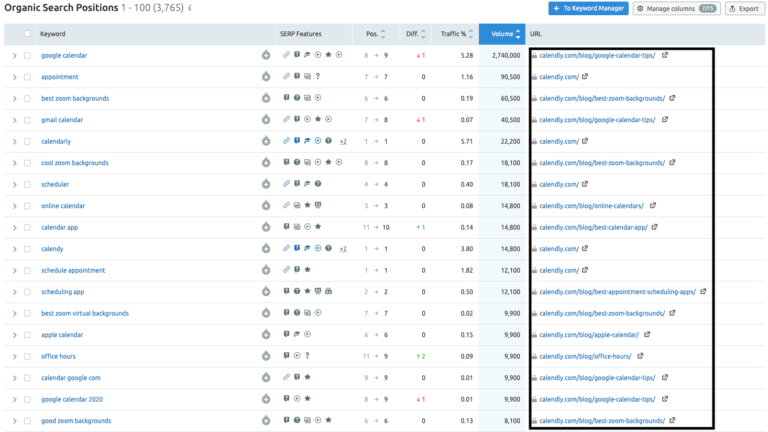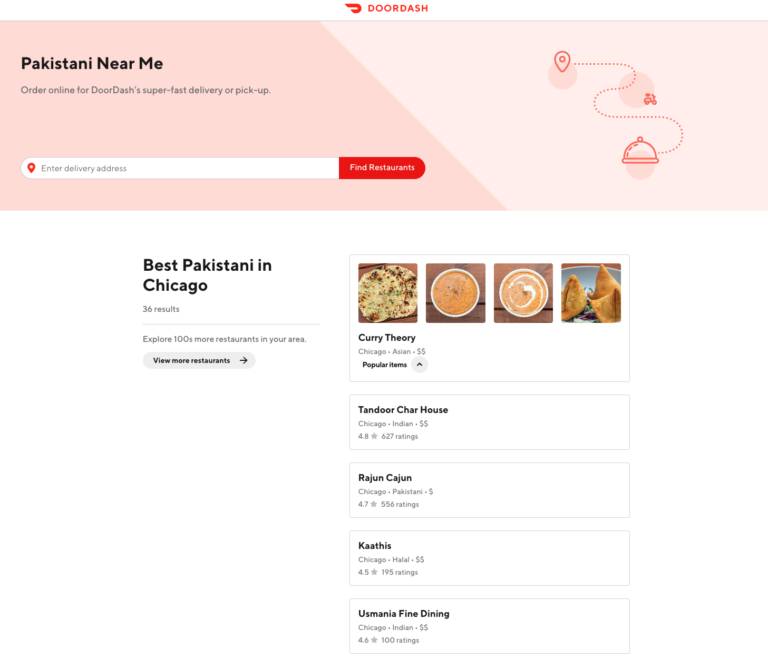12 Jan How to Build SEO Into a Product via @Kevin_Indig
I’m often asked how to grow organic traffic exponentially.
While that’s a broad question, one point I always make is that organic traffic from the product beats content marketing every time.
SEO works much better when you don’t have to create the content yourself.
But for that to work, you need to build SEO into your product.
Companies that understand this principle have much higher chances to grow SEO traffic at scale.
What Does ‘Building SEO Into the Product’ Actually Mean?
Instead of making SEO an afterthought and trying to glue it onto an existing product, “building SEO into the product” means developing a product with SEO in mind.
Considering what user intent it could satisfy.
Thinking about content.
Defining a scalable architecture.
Products with SEO in their core DNA inspire and produce indexable, useful content at scale.
In general, products can be “closed” or “open.”
- Closed products keep the user experience gated.
- Open products allow users to experience a part of the product’s value before signing up.
Not all products can expose a part of their value.
Calendly, for example, is a helpful calendar management app, but there is no useful way to expose part of the core product value to search engines.
If Calendly wants SEO traffic, they need to create the content themselves (which they do). Most organic traffic comes to their blog (see below).
 Calendly drives most organic traffic through their blog.
Calendly drives most organic traffic through their blog.
Another example is Canva, which does a great job at building useful content that converts searchers to users with templates and guides that signal high intent and send people straight into the product with one click.


Some business models simply don’t allow to build SEO into the product – and that’s OK.
Long sales cycles, “techy,” or non-software products don’t need to rely on software to be successful.
But the point is that they can be just as successful leveraging SEO. It’s just a different playbook.
On the other side are products like Notion, Trello, Pinterest, G2, or Amazon. These products have SEO in their DNA.
They have different business models but leverage SEO to grow at a significant scale.
Notion and Trello, for example, could have chosen to close the product experience. Instead, they allow notes, boards, or pages to be publicly visible and indexable by search engines.
 Trello drives organic traffic through indexable boards and cards.
Trello drives organic traffic through indexable boards and cards.
How Does It Work?
There is no fixed process for developing products, just a set of guidelines and principles:
- Achieve a product-market fit.
- Build something a large market wants.
- Solve real problems.
- Provide a great user experience.
The core question you need to ask yourself when building SEO into the DNA of your product is this:
What features can you expose to search engines that satisfy a user intent?
If you can tie the value of a product feature to an intent people express on search engines, you’ve got something!
A helpful framework to explore what that could be is Jobs to Be Done by Clayton Christensen, a former Harvard professor, author, and developer of the disruptive innovation theory. According to the Christensen Institute:
“The theory of Jobs to Be Done is a framework for better understanding customer behavior. While conventional marketing focuses on market demographics or product attributes, Jobs Theory goes beyond superficial categories to expose the functional, social, and emotional dimensions that explain why customers make the choices they do. People don’t simply buy products or services; they pull them into their lives to make progress. We call this progress the “job” they are trying to get done, and understanding this opens a world of innovation possibilities.”
A 5-Step Process for Building SEO Into a Product
Based on this idea, here’s a five-step process to help you build SEO into your product:
1. Identify the Jobs-to-be-Done
When building SEO into a product, you need to understand what jobs people can use it for, which is very related to the core problem you initially set out to solve.
However, you should also look at smaller problems your product solves.
Make a list of all these problems.
2. Match Product Content with Exposable Content
Your product needs to develop, create, or aggregate some sort of content searchers can find through Google and other search engines.
This is often related to user-generated input: reviews, curations, posts, boards, etc.
For example, reviews or votes allow you to aggregate data, visualize it, and expose it to search engines. You can also create the inventory yourself, say for local services or shoppable inventory for ecommerce.
3. Define a Scalable Taxonomy
You need to define how you classify your product’s data or content.
At this point, you build a logical and scalable architecture out of categories, sub-categories, and instances or products. You can also opt for a flat architecture as social networks do with hashtags.
In most cases, this step is pre-defined by the architecture of your product and how people use it.
4. Decide How Much of the User Experience You Can Expose
Look at how much of the user experience you can expose in a useful way.
You can’t give away the whole product for free unless you use an ad model.
The goal here is to convert visitors to sign-ups by gating the full experience.
It’s a balancing act.
5. Validate User Intent
Finally, you need to validate that your content satisfies user intent.
Check if the keywords you target have search demand and whether you can solve the problem people are looking out to solve.
For example, Pinterest boards inspire people. G2 reviews help them evaluate software. Notion templates help them customize their own pages.
We’re coming full-circle to the Jobs-to-Be-Done framework, as you can see.
Let me give you another example.
Doordash is a 3-sided marketplace of customers, restaurants, and drivers. Since customers initiate the value chain and nobody searches for drivers, indexing restaurants is the most logical choice.
Since restaurants are tied to a locale, Doordash classifies them by city and the type of restaurant.
The user intent is finding a specific kind of food in close proximity or looking for inspiration for what to eat. Designing and developing their product in that way worked out really well for Doordash.
 Doordash’s product pages are optimized for “near me” user intent
Doordash’s product pages are optimized for “near me” user intent
Hard & Soft Requirements
When building SEO into a product, there are hard and soft requirements.
Without meeting the hard requirements, you won’t attract organic traffic.
You don’t have to meet soft requirements, but they will increase your chances of scaling SEO traffic quickly.
Hard requirements:
- Google must be able to render publicly accessible pages.
- Google must be able to access and crawl all publicly exposable pages.
- To rank pages, they must contain valuable content: avoid any types of thin content.
- Search pages shouldn’t be indexed (Google doesn’t want to send searchers to another search page).
Soft requirements:
- Users should convert in some way, whether it’s signing up for an email newsletter or for the product, to create business value beyond brand exposure.
- In the best case, the content is either created automatically or by users (UGC).
It’s All About Loops
The goal of building SEO into a product is to attract new users through organic search.
But it doesn’t stop there.
You also want them to sign up for your product and add value to your product. That will then lead to more content and sign-ups from users.
In other words, you need to build an acquisition loop.
Also known as “flywheels,” acquisition loops are self-reinforcing systems.
For example, a user builds a public Trello board, it ranks on Google, searchers find it, sign-up, and set up their own board.
To measure the success of SEO, we need to look at it from that kind of holistic perspective. It’s what I call “Organic Growth” – the intersection of growth and SEO.
More Resources:
- Paving the Path Forward with SEO: Preparing for New Normalities
- 10 Signs Your Digital Marketing Strategy Needs an Overhaul
- 10 Important 2021 SEO Trends You Need to Know
Image Credits
All screenshots taken by author, January 2021
Sorry, the comment form is closed at this time.